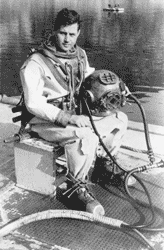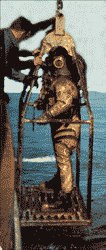
Mike and Georgann Wachter are well known as the authors of Erie Wrecks and Lights, Erie Wrecks East, and Erie Wrecks West. In addition to their books, Mike and Georgann have recently published a Lake Erie shipwreck map listing over 300 GPS wreck coordinates for divers.
They have been diving around the world since the mid 1970’s. However, nowhere else in the world have they discovered the kind of pristine and perfectly preserved shipwrecks that lie in the fresh waters of the Great Lakes. This has resulted in the discovery or rediscovery of 30 wreck sites. What was once a part time hobby became a full time investigation of the myths and realities behind the thousands of shipwrecks in the Great Lakes.
They have written numerous magazine articles and have a passion for creating diver access to and preserving Great Lakes maritime history. Both have been active in the Maritime Archaeological Survey Team (MAST) where Mike is past president and Georgann has been treasurer. Under Mike’s tenure 6 shipwrecks in Ohio waters were moored for divers. They are active members of Lake Erie Wreck Divers and Bay Area Divers scuba clubs. They co chair the annual Bay Area Shipwrecks & Scuba symposium.
Georgann was inducted into the international Women Divers Hall of Fame in 2013 for documenting over 250 Great Lakes shipwrecks with her writing, research and marine artwork. Mike is a recently retired management consultant who now devotes his time to finding, exploring and telling tales of Great Lakes shipwrecks and lighthouses. He hosts a database on wrecks at eriewrecks.com. The collaboration of Georgann’s love of research and Mike’s love of story telling provides the fuel for the Erie Wrecks series.
Armored Warriors of the Deep

Many divers use mixed gases and deco gases to reach depths beyond 100 feet. The groundwork for this was laid by early hard hat divers who called their dive suits “dive armor”. This program tells the story of these “armored warriors of the deep”, and the influence they had on Great Lakes diving, treasure, and salvage work.

Soon diving developed into underwater construction jobs that could be hazardous, as one Chicago hard hat diver found out. During this program we will visit many of the wrecks we dive today through the eyes of the early hard hat diver. Included in the program are the Atlantic, Morning Star, Wisconsin, Pewabic, and others. A demonstration of some commercial equipment completes the story.



